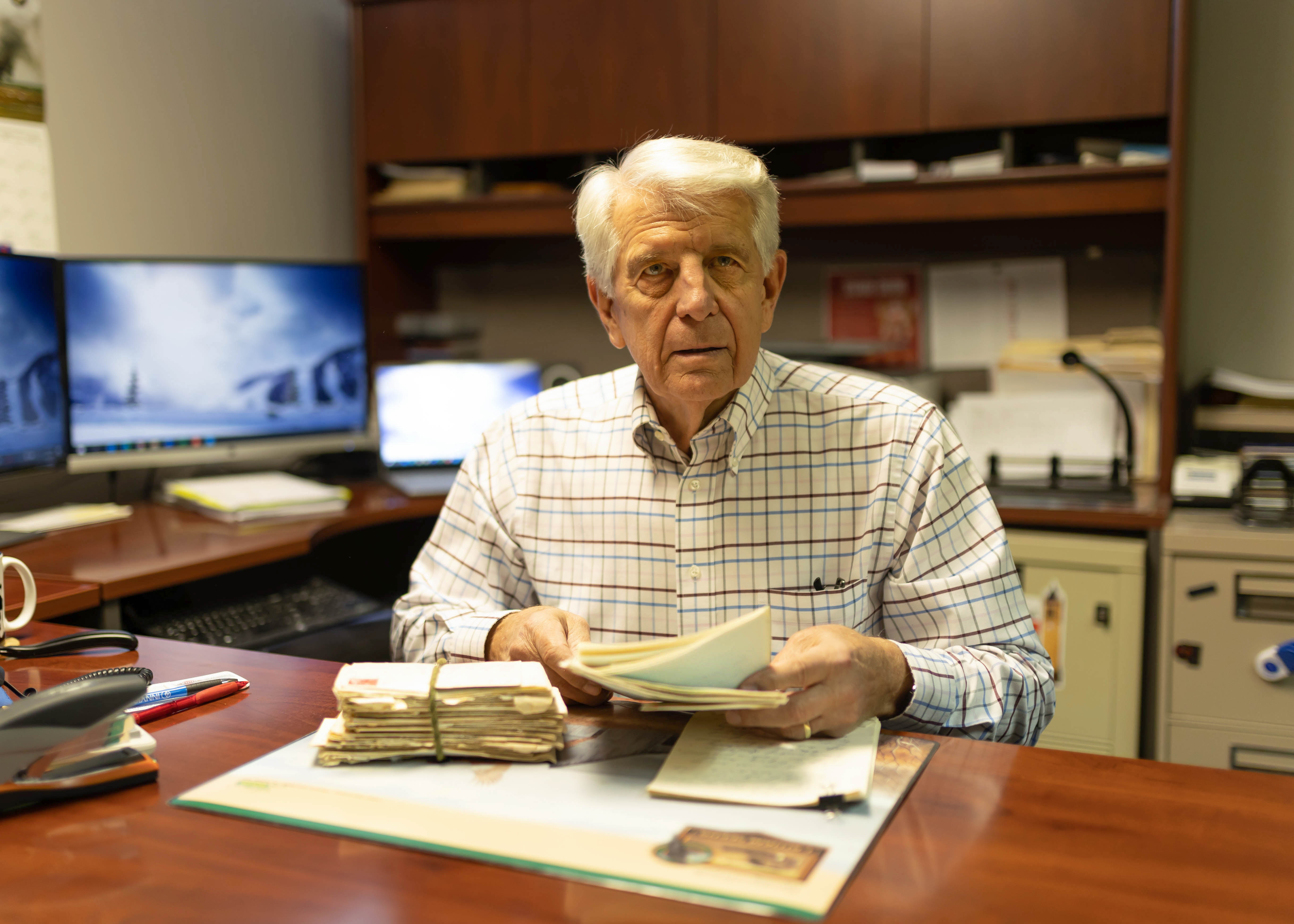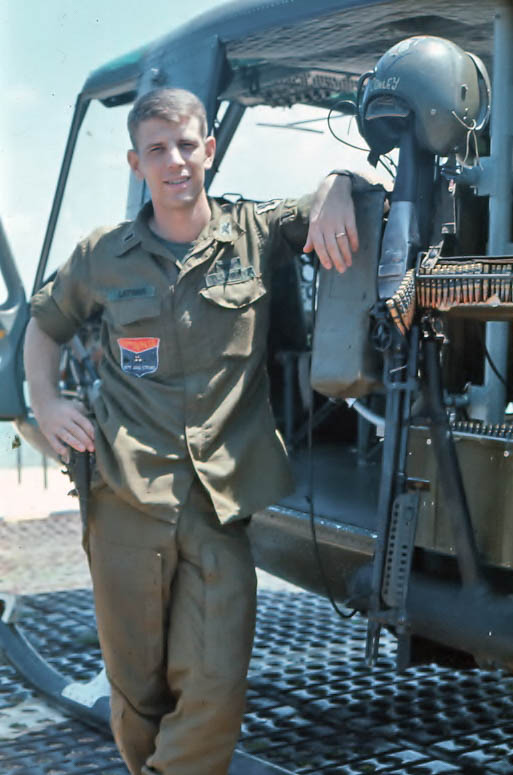
Don Latham with his stack of letters and notes he received from his wife, Marilyn, during his service in the U.S. Army during the Vietnam War. (Photo: Joclyn Bushman/Iowa Soybean Association)
50 years later, veteran reflects on service in Vietnam
November 11, 2021 | Bethany Baratta
A thick stack of letters and cards adorns Don Latham’s desk in his basement office in his home near Alexander. The notes, correspondence with his wife, Marilyn during his service in the U.S. Army, await Latham’s attention. He’s already transcribed the cassette tapes the two traded, now he’s typing up the letters and adding it to the document. The letters and tapes helped fill the void and the 8,000-plus miles that separated them.
He’s saving the letters and transcripts for their grandchildren.
Don and Marilyn met at a band contest in high school. He, a student at Alexander, a trombone player. She, a clarinetist from Klemme. The two would reconnect years after that contest and marry in September 1968 before Don joined the U.S. Army during the Vietnam War. Marilyn worked as a registered nurse at Mary Greeley Hospital while Don finished school. She worked as a nurse in Belmond and lived with her parents in Klemme while Don was serving in Vietnam.
Recruitment
During his sophomore year at Iowa State in 1966, the U.S. Army was actively drafting students out of college to go into the service and to Vietnam. The Army had developed a 2-year ROTC program, which would pay him $100 per month, enough to pay for college at the time.
Don committed to being a pilot in the Army; a good fit for the farmer who always wanted to fly. Flight school proved that Don was good at it, too. Don was ranked second in his class of 120. Between his training in meteorology, flight training and in-depth understanding of flight rules, he earned an instrument rating, allowing him to not only fly helicopters in inclement weather in Vietnam and the US, but also help train aspiring military pilots.
Don served in the U.S. Army from 1969 until 1973 including a year in Vietnam with an Assault Helicopter Company. After returning from Vietnam, he served as an instrument instructor pilot with the 101st Airborne Division at Fort Campbell, Kentucky. He recalls stressful events during training sessions with his students and in Vietnam himself.
In one instance, he and two students were flying from Nashville in instrument flight rule conditions when they were advised that there was a tornado approaching their destination, Ft. Campbell. Diverting from the flight plan wasn’t something Latham could do on a whim, it required the OK from tower control. After a request to divert, there was silence on the other end.
Minutes—in what felt like hours—later, the redirect was approved and they landed safely, missing the tornado.
His experiences in Vietnam were even more harrowing.
“My experience was unique, everyone’s was,” Latham, 75, says. “You did what you were told to do. We did our job regardless. I flew helicopters and got shot at.”
He contends, however, that he had it ‘easy.’
“I came back from flight missions at night and had a bed to sleep in," he says. "I admire those who were sloshing through the rice paddies. But they did what they were told, and I did what I was told.”

On one of several missions, he flew a UH-1 (Huey) helicopter at treetop level. Attached to the helicopter were tubes that could measure carbon dioxide levels. At 200 feet above ground, flying at 100 miles an hour, it could detect increases in carbon dioxide, indicating the presence of animals or Viet Cong (enemy) forces.
The defense intelligence agency would then determine the next actions.
He’s often thought about that technology.
“I always thought why, if 50 years ago we could detect minute increased levels of carbon dioxide at 100 miles an hour at 200 feet, why can’t we have sensors in my soybeans or corn field that can detect X,” he said. Then, upon detecting that X factor, Latham could then get site-specific applications of fungicides, herbicides, etc.
Going home
After his service in the Army—overseas and domestically—the Lathams returned to Alexander and helped his parents run the Latham Seed Company. Raising three children and actively farming, they also got involved in the soybean industry raising seeds and serving on various boards.
Don says his service to the country readied him for future leadership opportunities.
“The leadership training I got in the Army I’ve applied everywhere else I’ve gone in life.”
Don’s been the chairman of four national organizations, including the United Soybean Board and president or chairman of multiple state organizations including the Iowa Soybean Promotion Board. He’s been involved in numerous task forces and committees related to the ag industry. He’s a member of the Vietnam Helicopter Pilots Association, Combat Helicopter Pilots Association, the American Legion, and Disabled American Veterans.
His service in the U.S. Army gave him a new perspective on the importance of being involved.
“In the military you learn discipline, teamwork, and that there’s a bigger cause than yourself.”
Learn more about Don’s service to the soybean industry in the December issue of the Iowa Soybean Review.
Back